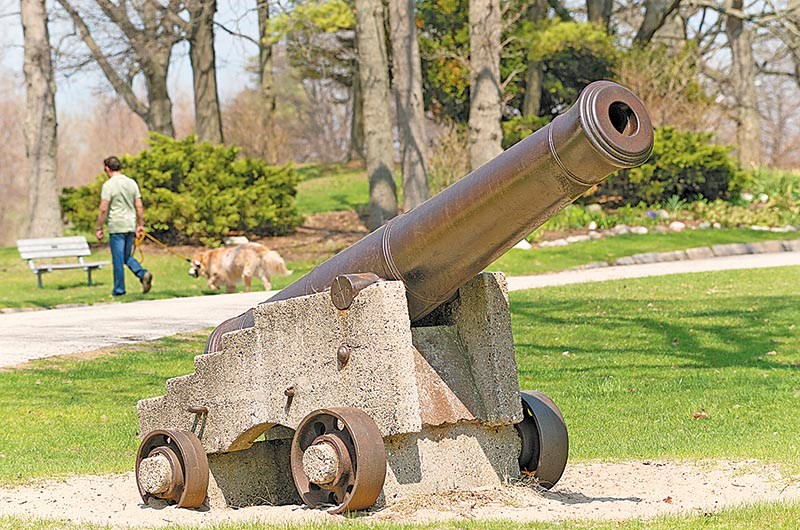It’s been climbed on, posed beside and rendezvoused at by half the people in Sarnia at one time or another.
But the origins of the cannon in Canatara Park, and how it got there, have long been a mystery.
Now, two men researching Sarnia’s war history have unearthed new evidence that sheds light on the story of “Big Tom,” as the gun is known.
“I had read there was a cannon in (Veterans’) park and wondered why it wasn’t there any more,” said Tom Slater, a retired St. Patrick’s High School teacher. “You’d think that somewhere there’d be evidence that people could put their hands on.”
There are two theories about Big Tom.
According to a short history of Veterans’ Park (formerly Victoria Park) the cannon was used during the Crimean War (1853 –1856).
Other references suggest it came from the British gunboat “Prince Alfred,” which went aground in Lake Huron somewhere near Point Edward in 1874.
According to that story, the ship was sold to the U.S. and the cannon removed and stored in the military reserve base at Point Edward until 1879.
The gun was moved at some point to Veterans’ Park, near the Sarnia Library, a traditional marshaling ground and send-off point for troops.
Last year Slater released The War Remembrance Project, which gathered the names of fallen local soldiers. He’s now updating and expanding the book with research help from Sarnia’ Randy Evans.
Evans recently unearthed archival records in the Milwaukee Public Library that indicate the Prince Alfred was a Canadian gunboat, and that it was built in Sarnia in 1859.
Evans also took measurement of the cannon and found its specs match those of British “68-pounder” cannons used against the Russian in the Crimean war.
Putting all that together Evan came up with a hybrid explanation.
“It’s a Crimean-era gun. I don’t think there’s much doubt about that. It may or may not have been used in the war, and it came over from England to Canada to help refit a colonial gunboat.
And the gunboat it ended up on was the boat made here in Sarnia,” he said.
All of the dates certainly fit. According to British naval records, The Prince Albert was equipped with "two Armstrong and four brass howitzer guns” which were used to train volunteer landsmen in 1871-72, Evans said.
The Sarnia-built vessel had a succession of private, government and company owners in Canada and the U.S. It was broken up and the register closed on May 25, 1885.
In the 1940's the federal government planned to smelt down Big Tom for the war effort. Local residents fought back, saying it didn’t belong to Ottawa because it was in Point Edward prior to Confederation.
Finally, the cannon was moved again, to Canatara from the downtown. That happened sometime between 1959 and 1961 in preparation for the current Sarnia Library building.
- George Mathewson
